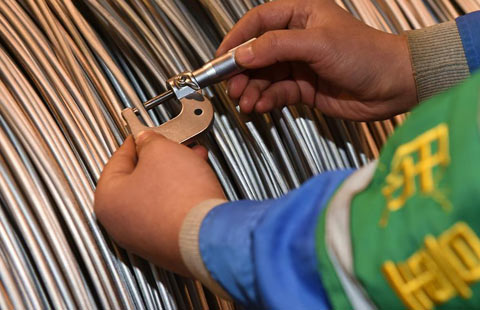Guangdong to speed work on infrastructure
Authorities in Guangdong province will accelerate infrastructure development in coming years, according to the southern province's governor.
Zhu Xiaodan said work will be speeded up in Nansha in Guangzhou, Qianhai in Shenzhen and Hengqin in Zhuhai.
"The three areas will become key platforms for further economic cooperation between Guangdong and the special administrative regions of Hong Kong and Macao," Zhu said during the annual session of the National People's Congress.
Last year, the central government gave approval for Nansha, on the southernmost tip of Guangzhou, the capital of Guangdong, to be a State-level pilot zone to foster closer business ties with Hong Kong and Macao. Nansha covers 803 sq km, enjoying a geographical advantage, as it is only 38 nautical miles from Hong Kong and 41 nautical miles from Macao.
The region will be granted the right to pilot mechanisms to drive growth. It will enjoy preferential policies on tax, land management, financial innovation and industrial development.
Zhu said the region will focus on developing the manufacturing and modern service sectors, including shipping logistics, high-tech innovation and leisure tourism, automobiles and shipbuilding. Work will begin in the district soon on a series of large projects, including the second airport in Guangzhou, sources from government said.
Qianhai, a stretch of 15 sq km of reclaimed land in western Shenzhen, is a pilot zone considered as a testing ground for the Chinese mainland's financial opening-up.
The Qianhai area will take on reform measures in finance, taxation, legal system, talent, education, medical treatment and telecommunications.
More than 180 financial enterprises had registered in Qianhai by the end of November, accounting for 76 percent of all companies introduced into the area, sources with the Qianhai administrative bureau said.
Ma Huateng, CEO of Shenzhen-based Tencent Holding Ltd, said: "We will move e-finance and e-commerce businesses to the Qianhai area, which gives priority to modern services and finance."
The central government unveiled measures in December for companies in Qianhai to borrow yuan loans from Hong Kong banks with interest rates to be fixed independently.
Hengqin Island in Zhuhai, at the mouth of the Pearl River, was approved by the State Council in 2009 as a pilot program for policies to boost regional economic integration.
Zhu said: "We are mulling over simplifying procedures of review and approval for investment from Hong Kong and Macao to set up production facilities in Hengqin."
Cooperation with Hong Kong and Macao will feature the service sector, especially producer services and high-end services, Zhu said.
"The three areas will help transfer the traditional processing trade to a modern service sector between Guangdong, Hong Kong and Macao," he said. "We will relax restrictions and allow more businesses enter the three areas."
Authorities in Guangdong will introduce more preferential policies for processing businesses invested by Hong Kong and Macao to help them in industrial upgrading, Zhu said.
Since the Hong Kong/Guangdong Cooperation Joint Conference was established in 1998, economic and social ties have been greatly strengthened between both sides.
They also signed the Framework Agreement on Hong Kong/Guangdong Cooperation in 2010, which elevated development of the Pearl River Delta region to a strategic level of national development, specifying cooperation between Hong Kong and Guangdong as a national policy.
qiuquanlin@chinadaily.com.cn

















